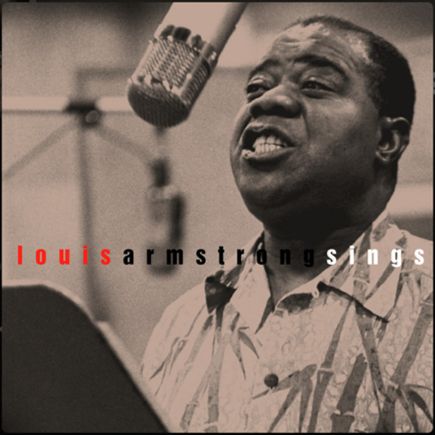All Of Me: entre abandon et jubilation
Composée en 1931 par Gerald Marks et Seymour Simons, All Of Me est rapidement devenue un standard du répertoire populaire et jazz. Si son couplet d’introduction de vingt mesures est souvent omis, la structure principale de la chanson révèle une tension expressive saisissante: les lignes descendantes initiales traduisent une forme de désespoir, tandis que les notes aiguës répétées de la dernière phrase insufflent une énergie presque joyeuse.
Derrière une harmonie relativement simple se cache une richesse expressive qui a inspiré de nombreux musiciens. Lennie Tristano, Warne Marsh et Bill Dobbins, entre autres, en ont fait la base de compositions nouvelles, respectivement intitulées Line Up, Background Music et Lo Flame.
Popularisée par Belle Baker à la radio, puis intégrée au film Careless Lady en 1932, All Of Me a su traverser les époques, demeurant une pièce privilégiée pour exprimer toute la palette émotionnelle du jazz vocal comme instrumental.
Louis Armstrong: entre mélancolie maîtrisée et éclat triomphant
L’interprétation de All of Me enregistrée à Chicago le 27 janvier 1932 par Louis Armstrong, à la trompette et au chant, incarne un moment décisif dans l’histoire du jazz vocal et instrumental. À cette époque, Armstrong s’est déjà imposé comme une figure centrale de cette musique en constante mutation. Son phrasé novateur, son swing incomparable et sa faculté à transcender les catégories musicales font de lui une force incontournable. Réputé – à juste titre – comme le premier véritable maître du jazz, il impressionne autant par sa trompette que par un chant au style immédiatement identifiable, bien que ce dernier ait souvent été relégué au second plan dans les cercles spécialisés.
Pourtant, c’est précisément ce timbre vocal chaleureux, cette manière de poser la voix avec une apparente simplicité, qui ont conquis un public bien plus large que celui des seuls amateurs de jazz. Le succès populaire d’Armstrong repose en grande partie sur cette dualité : musicien virtuose et interprète accessible.
Dans ce contexte, All of Me occupe une place particulière. L’arrangement met en lumière sa capacité à s’approprier totalement un standard. Armstrong y déploie une expressivité bouleversante, entre lignes descendantes pleines de douceur et phrasés limpides qui traduisent une sensibilité propre à son langage musical. Cette lecture semble porter en creux une forme de mélancolie contenue, une émotion jamais forcée mais toujours présente. Puis, dans les dernières mesures, l’éclat des notes aiguës répétées suggère une victoire intérieure, une affirmation de soi face à l’abandon évoqué par les paroles. Ce contraste entre fragilité assumée et affirmation éclatante résume à lui seul la puissance de son art.
All Of Me: entre abandono y júbilo
Compuesta en 1931 por Gerald Marks y Seymour Simons, All Of Me se convirtió rápidamente en un estándar del repertorio popular y del jazz. Aunque el verso introductorio de veinte compases suele omitirse, la estructura principal de la canción revela una tensión expresiva notable: las líneas descendentes iniciales transmiten una forma de desesperación, mientras que las notas agudas repetidas de la última frase infunden una energía casi jubilosa.
Detrás de una armonía relativamente sencilla se esconde una riqueza expresiva que ha inspirado a numerosos músicos. Lennie Tristano, Warne Marsh y Bill Dobbins, entre otros, utilizaron su base para componer nuevas obras tituladas respectivamente Line Up, Background Music y Lo Flame.
Popularizada por Belle Baker en la radio, y posteriormente integrada en la película Careless Lady en 1932, All Of Me ha atravesado generaciones, consolidándose como una pieza clave para expresar toda la paleta emocional del jazz vocal e instrumental.
Louis Armstrong: entre melancolía contenida y fulgor triunfante
La interpretación de All of Me, grabada en Chicago el 27 de enero de 1932 por Louis Armstrong, a la trompeta y la voz, representa un momento decisivo en la historia del jazz vocal e instrumental. Para entonces, Armstrong ya se había consolidado como una figura central en esta música en constante evolución. Su fraseo innovador, su swing inconfundible y su capacidad para trascender las etiquetas estilísticas lo convierten en una fuerza indiscutible. Reconocido —con razón— como el primer gran maestro del jazz, impresiona tanto por su trompeta como por una voz de estilo inconfundible, aunque esta última haya sido a menudo subestimada en los círculos más especializados.
Sin embargo, es precisamente ese timbre cálido, esa forma de cantar con aparente sencillez, lo que conquistó a un público mucho más amplio que el de los conocedores del jazz. El éxito popular de Armstrong se sustenta en esta dualidad: músico virtuoso e intérprete accesible.
En este marco, All of Me ocupa un lugar especial. El arreglo revela su capacidad para apropiarse plenamente de un estándar. Armstrong despliega una expresividad conmovedora, alternando líneas descendentes llenas de dulzura con frases diáfanas que revelan una sensibilidad propia de su lenguaje musical. Su interpretación encierra una melancolía contenida, una emoción nunca forzada pero siempre presente. Y en las últimas frases, la repetición de notas agudas sugiere una forma de triunfo interior, una afirmación personal frente al abandono evocado por la letra. Ese contraste entre vulnerabilidad asumida y afirmación resplandeciente sintetiza la fuerza de su arte.
All Of Me: tra abbandono ed esuberanza
Composta nel 1931 da Gerald Marks e Seymour Simons, All Of Me è rapidamente diventata uno standard del repertorio popolare e jazz. Sebbene l’introduzione di venti battute venga spesso tralasciata, la struttura principale del brano rivela una tensione espressiva notevole: le linee discendenti iniziali esprimono una forma di disperazione, mentre le note acute e ripetute della frase conclusiva infondono un’energia quasi gioiosa.
Dietro un’armonia relativamente semplice si cela una ricchezza espressiva che ha ispirato numerosi musicisti. Lennie Tristano, Warne Marsh e Bill Dobbins, tra gli altri, hanno utilizzato questa base per nuove composizioni intitolate rispettivamente Line Up, Background Music e Lo Flame.
Resa popolare da Belle Baker alla radio, e successivamente inserita nel film Careless Lady del 1932, All Of Me ha saputo attraversare le epoche, rimanendo un brano privilegiato per esprimere tutta la gamma emotiva del jazz, sia vocale che strumentale.
Louis Armstrong: tra malinconia contenuta e bagliore trionfante
L’interpretazione di All of Me, registrata a Chicago il 27 gennaio 1932 da Louis Armstrong, alla tromba e alla voce, rappresenta un momento cruciale nella storia del jazz vocale e strumentale. In quel periodo, Armstrong si era già affermato come figura centrale di una musica in continua trasformazione. Il suo fraseggio innovativo, il senso del swing inimitabile e la capacità di superare i confini stilistici lo rendono una forza irrinunciabile. Riconosciuto – giustamente – come il primo grande maestro del jazz, impressiona tanto con la tromba quanto con uno stile vocale immediatamente riconoscibile, anche se quest’ultimo è stato spesso trascurato dagli specialisti.
Eppure è proprio quel timbro caldo, quel modo apparentemente semplice di porgere la voce, ad aver conquistato un pubblico ben più vasto degli appassionati del genere. Il successo popolare di Armstrong si fonda su questa duplice identità: virtuoso dello strumento e interprete accessibile.
In questo contesto, All of Me assume un valore particolare. L’arrangiamento mette in risalto la sua straordinaria capacità di appropriarsi completamente di uno standard. Armstrong vi esprime una sensibilità profonda, alternando linee discendenti delicate a frasi limpide che riflettono la raffinatezza del suo linguaggio musicale. La sua lettura sembra custodire una malinconia trattenuta, un’emozione sempre presente ma mai ostentata. Nelle battute finali, tuttavia, le note acute ripetute sembrano suggerire una vittoria interiore, un’affermazione di sé di fronte all’abbandono narrato nel testo. Questo contrasto tra fragilità espressa e affermazione luminosa racchiude tutta la forza del suo stile.
All Of Me: between surrender and jubilation
Composed in 1931 by Gerald Marks and Seymour Simons, All Of Me quickly became a standard in both the popular and jazz repertoires. While its twenty-bar introductory verse is often omitted, the song’s core structure reveals a striking expressive tension: the initial descending lines convey a sense of despair, while the repeated high notes in the final phrase bring a surge of almost joyous energy.
Beneath its relatively simple harmony lies a wealth of expression that has inspired countless musicians. Lennie Tristano, Warne Marsh, and Bill Dobbins, among others, used it as a foundation for new compositions titled Line Up, Background Music, and Lo Flame, respectively.
Popularized by Belle Baker on radio, and later featured in the 1932 film Careless Lady, All Of Me has endured across generations, remaining a favorite vehicle for conveying the full emotional range of both vocal and instrumental jazz.
Louis Armstrong: between restrained melancholy and triumphant brilliance
The performance of All of Me, recorded in Chicago on January 27, 1932, by Louis Armstrong on trumpet and vocals, marks a pivotal moment in the history of vocal and instrumental jazz. By then, Armstrong had already established himself as a central figure in this ever-evolving music. His innovative phrasing, unmatched sense of swing, and ability to transcend stylistic boundaries made him a defining force. Rightly hailed as the first true master of jazz, he dazzled not only with his trumpet but also with a vocal style that was instantly recognizable — though often underestimated in more specialist circles.
Yet it was precisely this warm vocal tone, that seemingly effortless delivery, that won over a public far beyond the world of jazz connoisseurs. Armstrong’s widespread popularity rested on a rare duality: virtuoso musician and accessible performer.
Within this context, All of Me holds a special place. The arrangement reveals his extraordinary ability to make a standard entirely his own. Armstrong delivers a deeply moving performance, blending gentle descending lines with crystal-clear phrases that reflect his singular musical sensibility. His reading of the song conveys a restrained melancholy, an ever-present emotion expressed without artifice. In the final bars, the repeated high notes suggest an inner triumph — an affirmation of self in the face of the song’s themes of loss and vulnerability. This balance between exposed emotion and confident assertion encapsulates the strength of Armstrong’s artistry.


